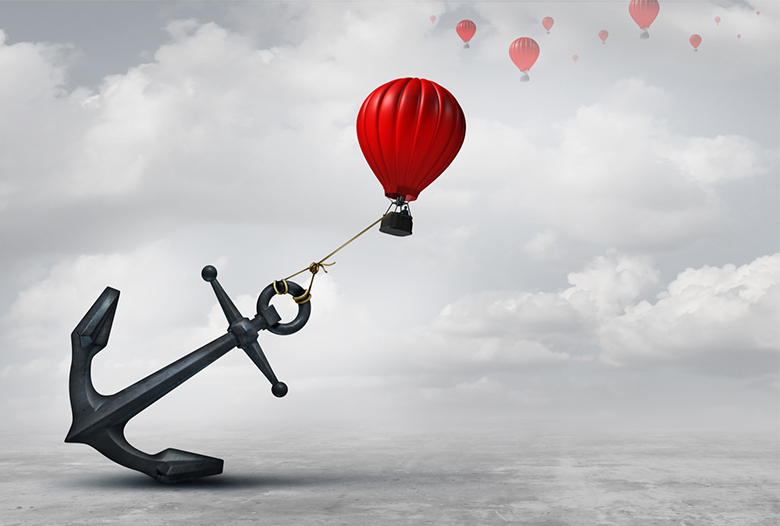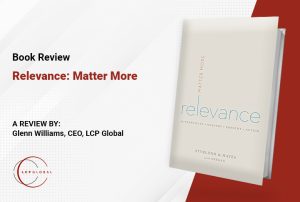The corporate lifecycle
Businesses go through different stages of change, much like people do throughout their lifespan. As described in developmental psychology, there are certain tasks that need to be accomplished and skills that need to be developed at each stage of growth on the path toward adult maturity. The same can be said for businesses. The ultimate goal for businesses is the Prime stage2, which is the business equivalent of a healthy mature adult. This is where the business is functioning at an optimal level. However, this is always predicated on managing the tension of growth and change; of being flexible yet exercising self-control; of not merely being satisfied with a strong sales pipeline, but of growing profit to create margin for anticipating new opportunities that prevent stagnation or complacency.
Failure to recognize which stage your business is in – and what skills you need to navigate through to the next one – can mean stalled momentum and stagnation.
Stagnation is a common roadblock to business success and can take on various forms depending on which life stage your business is at. You can avoid stagnation by anticipating the next stage of the corporate lifecycle your business needs to move into. However, this is only possible if you can identify which stage you are currently in.
The five stages of the corporate lifecycle before a business enters decline, as outlined by Dr Ichak Adizes in his book Managing Corporate Lifecycles: How Organizations Grow, Age and Die, are:
- Courtship
- Infancy
- Go- Go
- Adolescence
- Prime

“The only time a business will not have problems is when it’s dead”.2
In relationships, there are normal problems we all face (e.g., communication, conflict, money, goals, etc.). Regardless of the contextual variables the core issues are the same. If worked through, this will lead to growth, but if not, the unresolved problems can become their undoing. In the same way, every business will encounter similar “problems” along the process of growing from ‘infancy’ where an idea was birthed, into a mature company—or what Adizes calls ‘Prime’.
For example, during the Infancy phase, cash-flow is one of the most pressing issues in order to survive. Rapid growth, limited time and capacity, and therefore missed opportunities, are common issues during the Go-Go phase where it lacks stable processes, systems, and a cohesive structure. These problems are “normal” in the sense that most companies experience similar issues at each stage. The more you are aware of the common challenges of each stage, the better you are able to plan how you can overcome these potential roadblocks and navigate the transitions for greater momentum and sustainability.
Better yet, if you are aware of what problems you can expect in that life stage, you can be more proactive in identifying what you need to reach the next one.
Increasing momentum in your business
Businesses have a lifeforce of their own; they are dynamic rather than static environments, requiring business owners to adapt to their changing needs. The different stages of parenting are an apt example. Behaviors that are necessary when looking after a newborn become ineffective during the toddler years. The way you relate to your teenager should be different to how you related to them when they were in primary school. Different stages require different behaviors. The good news is that by knowing which stage your business is currently in and anticipating the stages to come can empower you to get the knowledge, skills, talent, and resources needed to make that transition without losing momentum. Failure to do so can be costly.Failing to recognize which stage you are in
One company we knew was turning over almost $1.3million and looking to grow. However, they didn’t appreciate the stage they were in. They thought they could delay recruiting for a sales position to focus on securing new contracts, and not introduce new products or services. The problem came when their main contract that contributed over 80% of turnover decided to split the contract between them and a competitor. By not understanding the life stage they were in, they didn’t have sufficient capital to recruit sales talent or enough to invest in new products. The company still operates, but its turnover is now $100,000 with a dwindling workforce and future, and unable to sell.
One thing to remember is, that it is possible for larger businesses to have business units that reflect the attributes of a life stage that are significantly different to its counterparts. Recognizing this is important and prevents a “one size fits all” approach to leading a business towards Prime.
What’s the bottom line?
“That which can be foreseen can be prevented”
- Charles H. Mayo.
By recognizing what stage of the corporate lifecycle your business is in and understanding what and who you need to transition to the next stage, your business can successfully maintain the momentum it needs to overcome common roadblocks to growth and success.
If you need help identifying where your business is on the corporate lifecycle and would like an experienced coach to walk you through transitioning to the next stage of growth, here’s how we can help.
1 US Small Business Administration. (2012). Do economic or industry factors affect business survival? SBA, Office of Advocacy, Small Business Facts,
https://www.sba.gov/sites/default/files/Business-Survival.pdf
2 Adizes, I. (2012). Managing Corporate Lifecycles – Volume 1: How Organizations Grow, Age & Die. Adizes Institute Publications.



